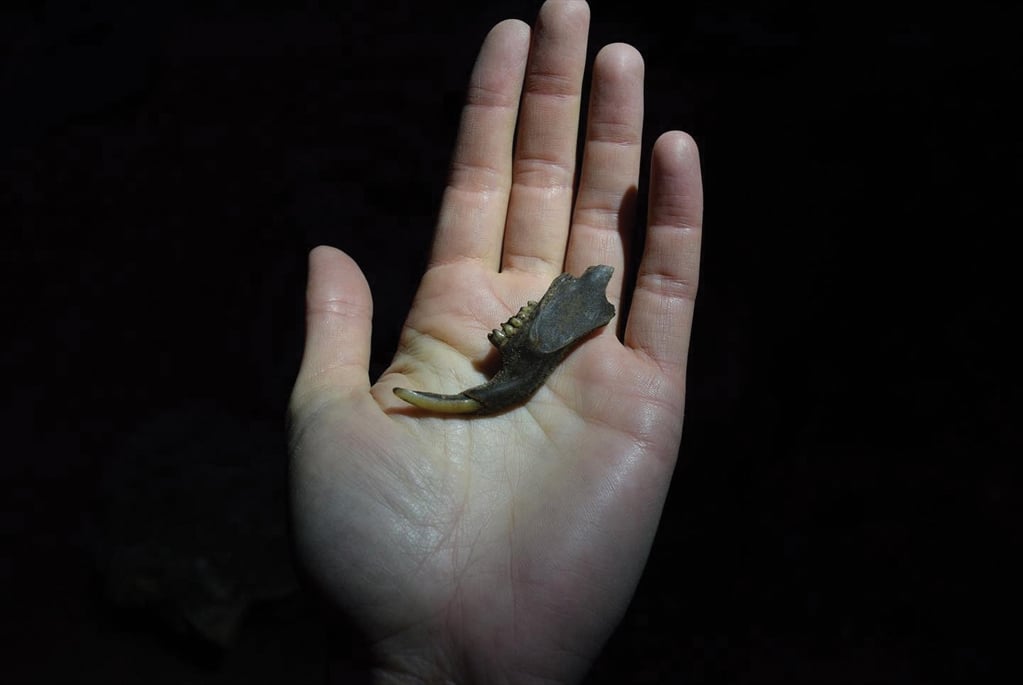From 1952 to 2022: Art Exhibits Celebrate Past and Present Pioneers of Gender Equality
By: Jennifer Herseim | Categories: Alumni Association News
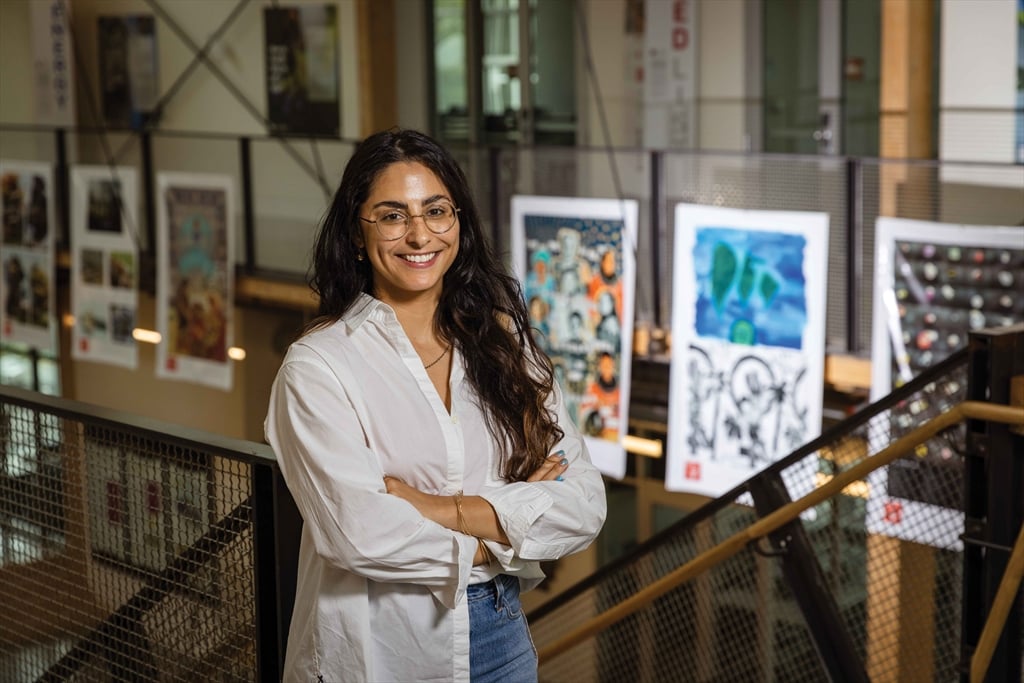
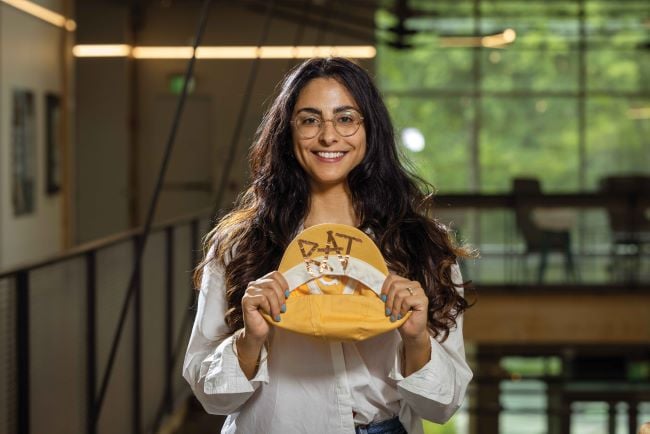
From 1952 To 2022
Art Exhibits Celebrate Past & Present Pioneers Of Gender Equality
By: Jennifer Herseim
Photograph By: Scott Dinerman, STC 03
In 1952, Elizabeth Herndon and Diane Michel, IE 56, made history as the first two women to enroll as full-time students at Georgia Tech. Almost 70 years later, Michelle Ramirez was deciding on a subject for her Digital Media master’s project and realized that aside from knowing Herndon and Michel were Tech icons, she didn’t know much about the two women. She didn’t know what their lives were like as students. Or about those who came later, such as Tawana Miller, IM 76, the first Black woman to graduate in the four-year program at Tech in 1976, more than 20 years later. Being first-generation American, Ramirez didn’t know who the first international students were, either. And another thought kept nagging at her: Why has it only been 70 years?
“I had so many questions. The more I learned, the more I realized there’s more to these stories,” Ramirez says. “We think of progress as being linear, but it’s not always the case. When Herndon and Michel enrolled at Tech, that wasn’t the end of the story.”
Ramirez created not one, but two projects to celebrate the 70th anniversary of women at Tech as well as recognize those working to achieve gender equality in technology today. Her first project, an interactive oral history exhibit for her Digital Media master’s, was on display for two days this spring at The Kendeda Building for Innovative Sustainable Design. Her exhibit, Gender Equality: Reimagining Our Future Through Art And Technology, is on display through December at The Kendeda Building.
Bringing Justice To Stories
For her master’s project, Digital Ghost Stories, Ramirez applied storytelling principles that she learned at Tech from her Digital Media advisor, Associate Professor Nassim Parvin, who writes about the use of digital storytelling to empower marginalized groups in her 2018 journal article “Doing Justice To Stories.”
The idea for the exhibit, Gender Equality, came last fall while Ramirez was working as a graduate research assistant in Georgia Tech’s Center for Serve-Learn-Sustain (SLS), an academic initiative that provides opportunities for students to collaborate with diverse partners on key sustainability challenges.
After learning of the 70th anniversary and starting her master’s project, Ramirez went to her SLS advisor, Rebecca A. Watts Hull, MS HSTS 15, PhD HSTS 18, who suggested she curate an exhibit connected to the U.N.’s Sustainable Development Goal 5 (SDG 5) on achieving gender equality.
All the pieces in the exhibit, which were submitted by faculty and students, are tied to SDG 5. Apart from this, they are diverse, including collages and collections, research papers, and artificial intelligence-generated artworks.
Together, these exhibits are a celebration of past and present pioneers of gender equality and a challenge of the unfinished work that remains.
“I think it’s important to not only celebrate women but to share their real experiences and to realize that this work isn’t done,” Ramirez says.
Scroll down to see selected pieces from both exhibits.
Digital Ghost Stories
“Ghosts, rather than a superstitious legacy of a past, are a haunting reminder of an ignored past. Rendering ghosts visible and learning to listen to them attentively is a lesson about the unacknowledged and unresolved injustices of history.”
–Banu Subramaniam, Ghost Stories For Darwin (2014)

This interactive oral history exhibit, which borrows its name from the quote above, shared the stories of women’s early experiences at Tech. Using interviews from the Georgia Tech Living History Program, Ramirez attached conductive tape to artifacts so that when the objects were handled, they played a recording of an alumna speaking about her life as a student.
Digital Media Associate Professor Nassim Parvin was Ramirez’s advisor on the year-long project. Parvin’s research on the importance of place in storytelling contributed to how Ramirez displayed the artifacts. “I thought about where we hear intimate stories with family and friends and thought about sitting in a living room.” She created a space resembling a living room, where viewers could move about, picking up artifacts to hear each story.
One artifact in the exhibit was an image of students waiting in long lines to register for classes. When the image was touched, a clip played of Elizabeth Herndon, who talked about waiting outside with her infant child in the long line for registration. Herndon said it was raining that day and later, they both became ill. Soon after, she made the decision to leave Tech. When Ramirez first heard the interview, she remembers thinking, “Here’s this icon of Tech and that story hasn’t really been told.”


Gender Representation In The Post-Anthropocene World
Anne Sullivan assistant professor of Digital Media and head of the StoryCraft Lab at Georgia Tech
With her piece, Anne Sullivan wanted to draw attention to the ways that artificial intelligence systems represent a society’s biases, particularly around gender. She used a text-to-image AI system called Disco Diffusion to create artworks generated using words classified as feminine and masculine. Finding a prompt for the AI proved challenging. Sullivan expected some bias in the artwork generated, but she didn’t expect the extent that the male gaze would play in the resulting images. “It took days of prompt-engineering to find a prompt using the feminine terms that would generate images that didn’t contain random nude female body parts placed around the image,” she says. Eventually, she found the two sentences that generated these two images above.
The prompt that used words classified as feminine includes curvy and organic shapes with warm colors, while the prompt with words classified as masculine is more rugged and desolate. “The AI system would almost always include a heart somewhere in the image when using feminine terms, even though ‘heart’ was nowhere in the prompt,” Sullivan says. “I thought this was a fascinating artifact of our society’s stereotype of women as being nurturing and caring!”
Nuestra Hermandad (Our Sisterhood)
Latina Women In Georgia Tech History
By: Alexandra Rodriguez Dalmau
For a class project, Alexandra Rodriguez Dalmau, an Environmental Engineering student from the Dominican Republic, set out to find the first woman from Latin America to attend Georgia Tech. Information was hard to find. She searched through international student records from the ’50s and ’60s before, finally, seeing not one, but nine women appear in 1976. She created a blog and this poster display to tell the stories of these nine women. Incomplete and missing records make it difficult to find information about international students in Georgia Tech’s history. These women are part of a legacy started by Rocio Lancaster, who is believed to have been the first Hispanic woman to attend Georgia Tech. Lancaster was born in Caracas, Venezuela in 1933 and attended Georgia Tech in 1954.
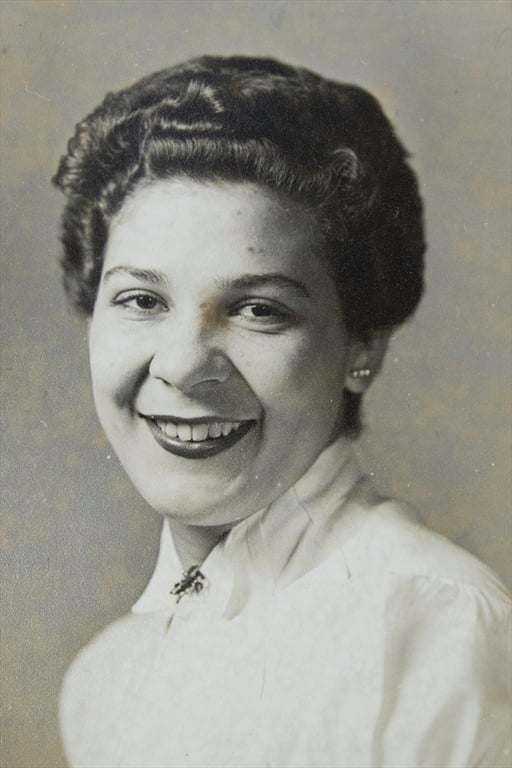
Rocio Lancaster
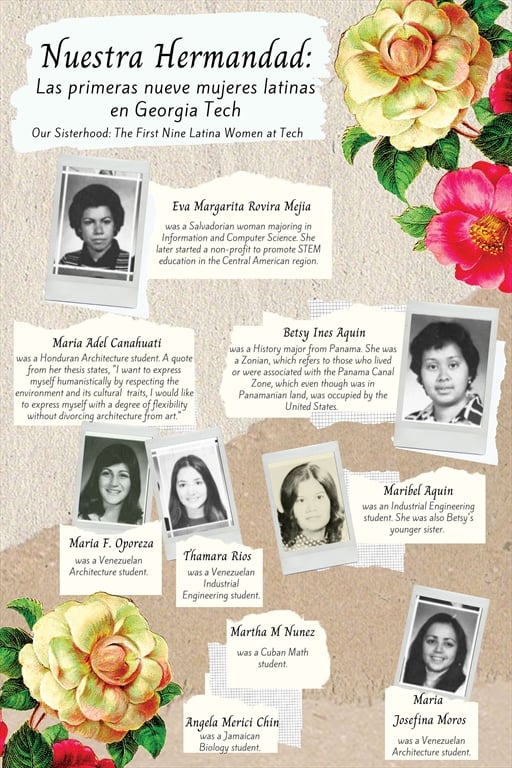
Incomplete records make it difficult to research Tech's first female students from Latin America. If you know of an alumna from Latin America who attended Tech before 1976, please let us know at editor@alumni.gatech.edu.
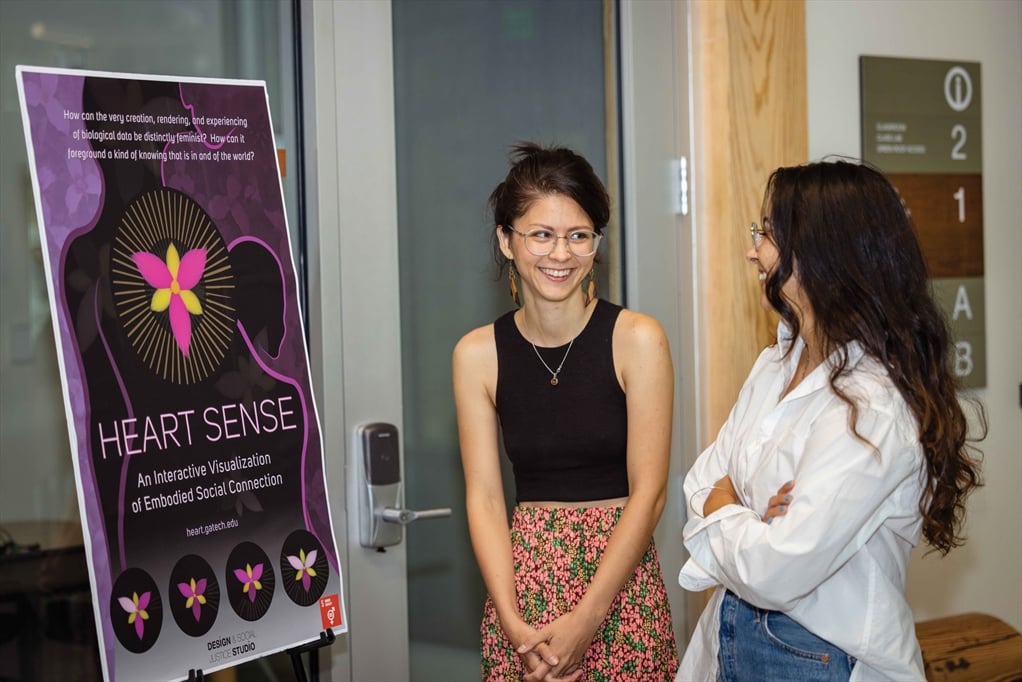
Heart Sense
Sylvia Janicki
How can biodata be feminist? One concept is Heart Sense. “Instead of thinking about biodata as a number or an objective measure, we’re thinking of it in a more intimate and relational way,” explains PhD candidate Sylvia Janicki, a student collaborator on Heart Sense.
In the art installation, three participants sit around a table where a projection displays a floral visualization of each person’s heart rate as well as the group’s collective biodata. The participants listen to music, responding to changes in their shared environment. Petals on the projection shift with their heart rates. A fast heart rate, for example, is displayed with a long, narrow petal. When the rate slows, the petal gets shorter and wider.
Beyond individual biodata, the projection also displays the group’s collective data. When their heart rates are in sync, the projection changes colors and rays light up around the table.
“This gives us a different starting point at how we look at medical data and personalized health, and how we understand our bodies,” Janicki says.
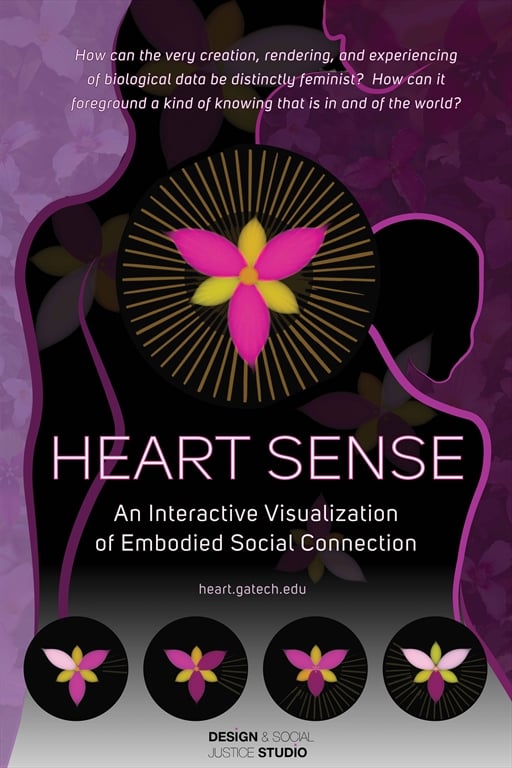
Heart Sense is led by Georgia Tech Associate Professor of Digital Media Nassim Parvin,
Anne Pollock of King's College London, and Associate Professor Lewis Wheaton
in Georgia Tech's School of Biological Sciences
